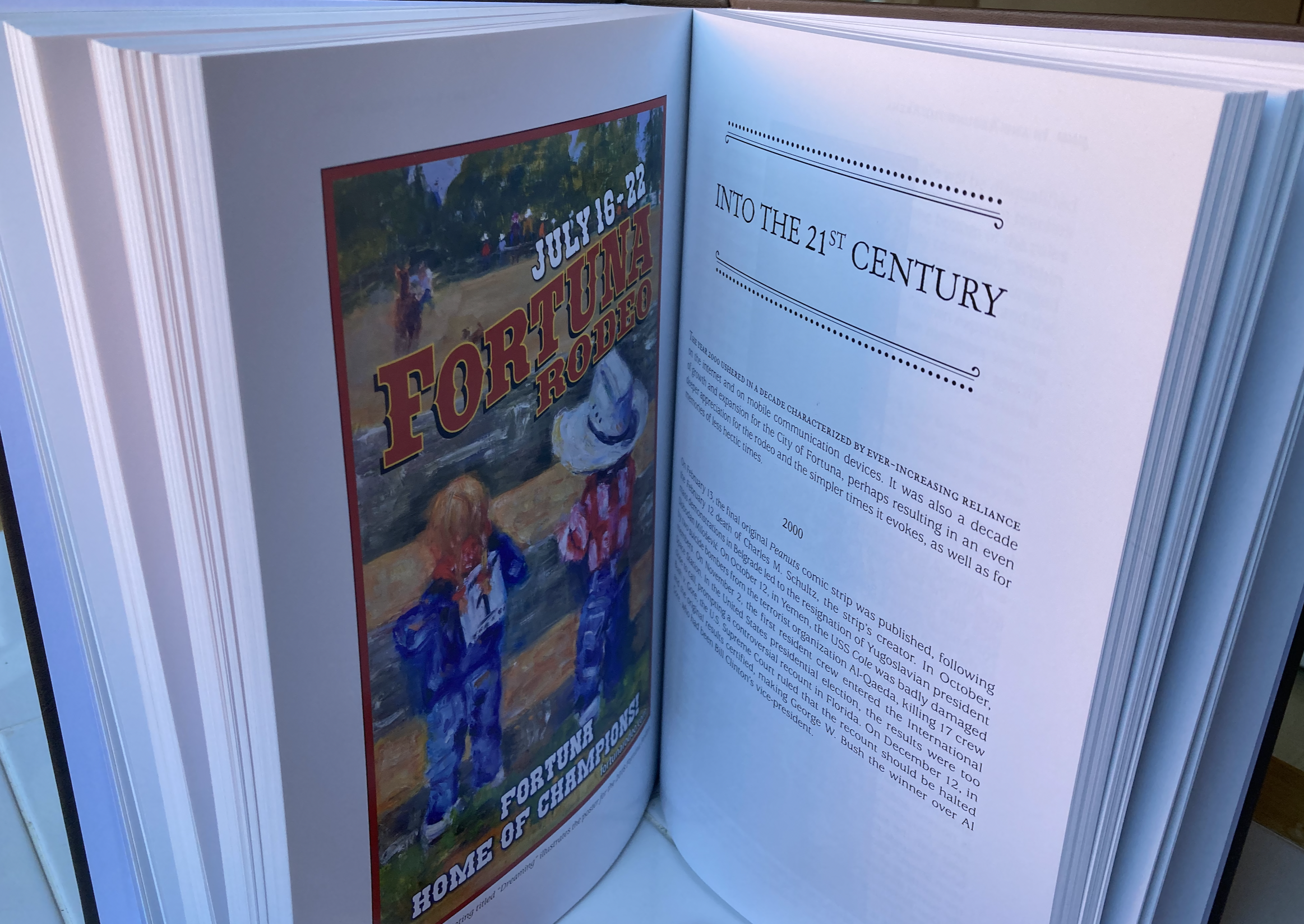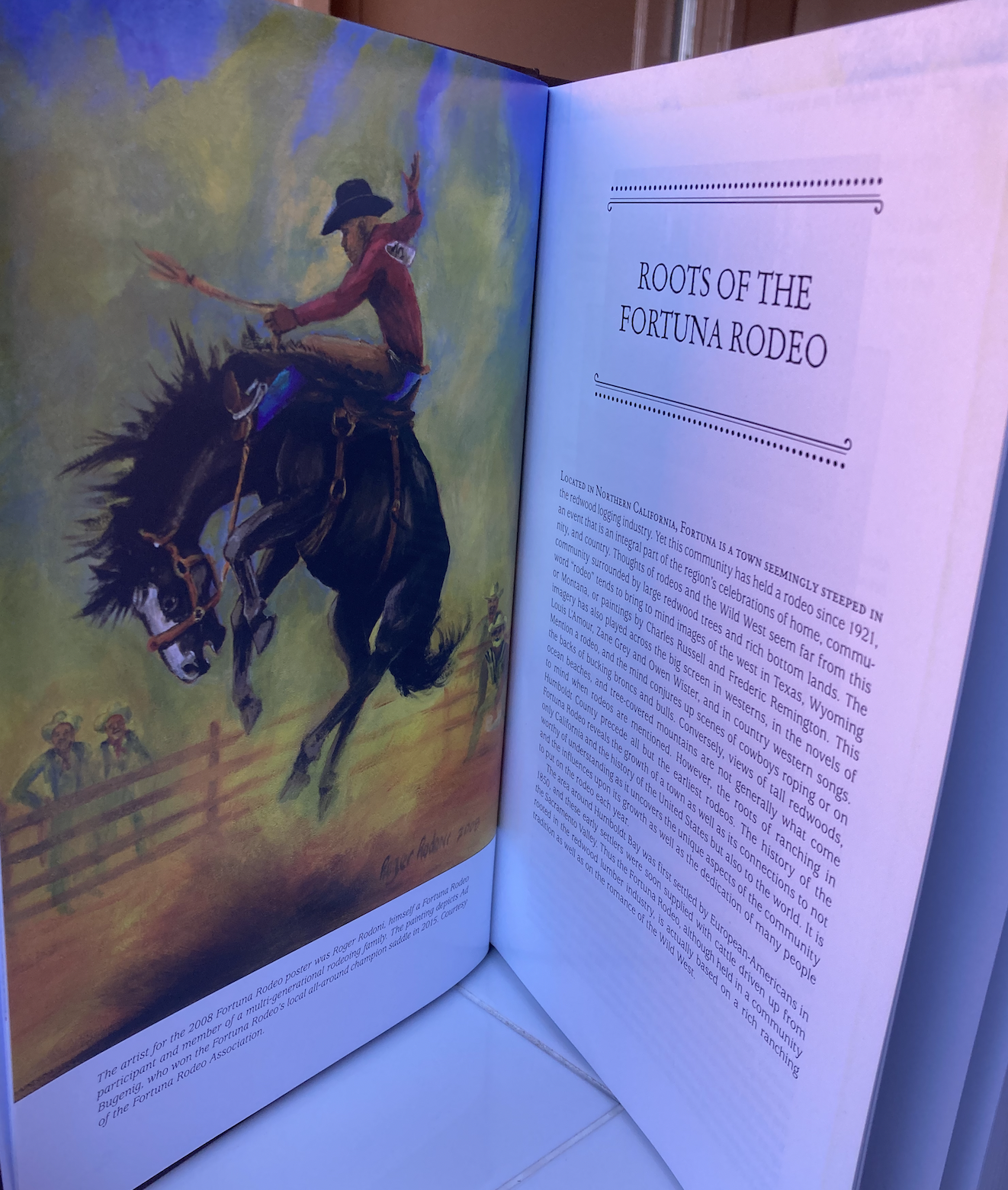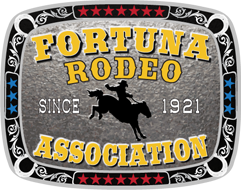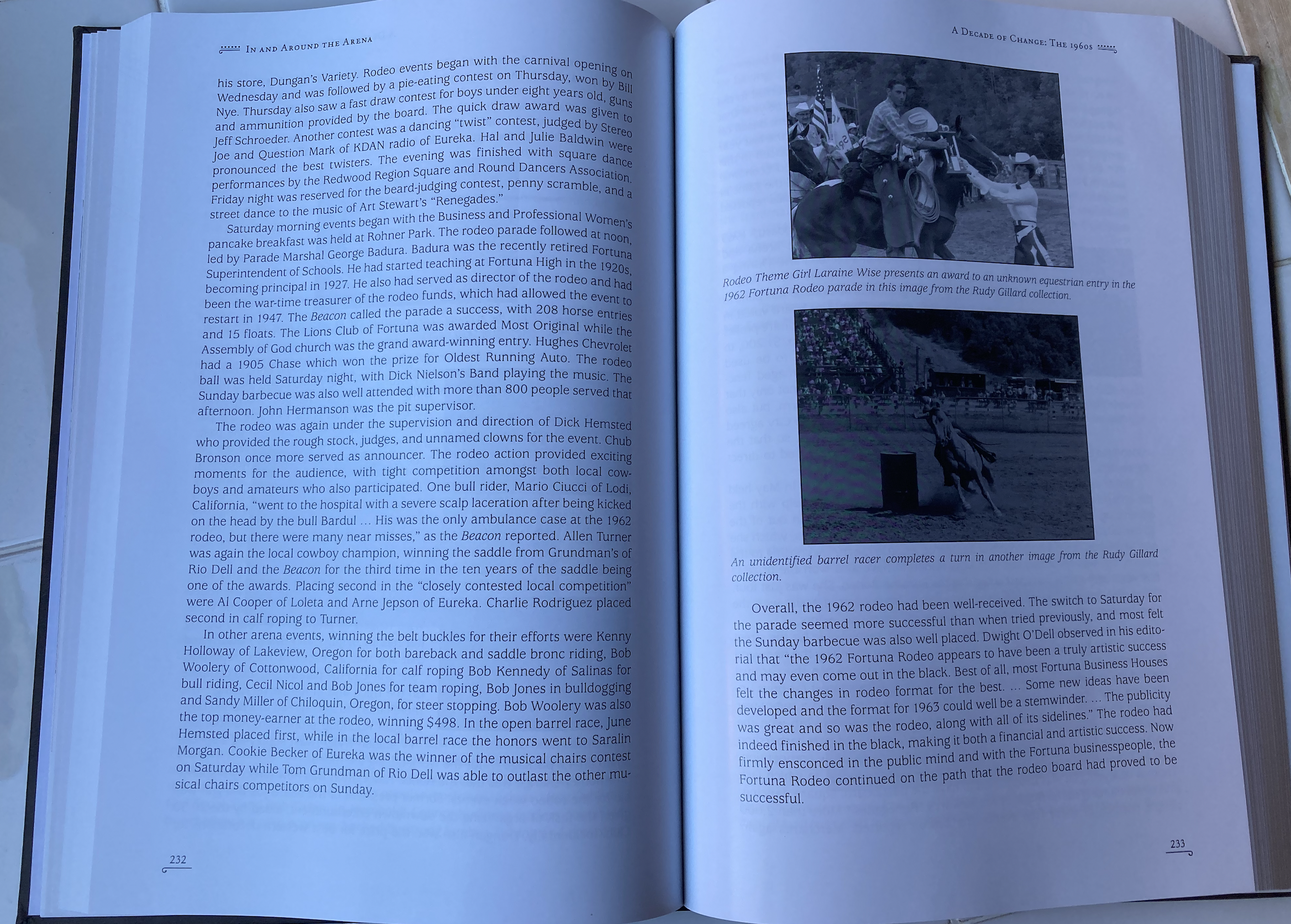In & Around the Arena
The 100-Year History of the Fortuna Rodeo

This beautiful work by historians Alex Service and Susan O'Hara is available now!
All proceeds benefit Fortuna Depot Museum!
All proceeds benefit Fortuna Depot Museum!

The Fortuna Rodeo Association board of directors along with the Fortuna Depot Museum are excited to announce the arrival of In and Around the Arena, the 100-year History of the Fortuna Rodeo. Local historians and authors Alex Service and Susan O’Hara have spent countless hours reviewing and compiling this incredible history of the first century of the Fortuna Rodeo. This beautiful hard-cover book is over 700 pages of Fortuna’s rodeo history!

These books are the perfect gift for the Fortuna Rodeo fans in your life! Books are selling for $100 each and are available at the Fortuna Depot Museum, Sequoia Gas, Humboldt’s Hometown Store, and other local places to follow. Proceeds from the sales of these incredible books will benefit the Fortuna Depot Museum as part of the rodeo board’s commitment to improving Fortuna's Rohner Park.

